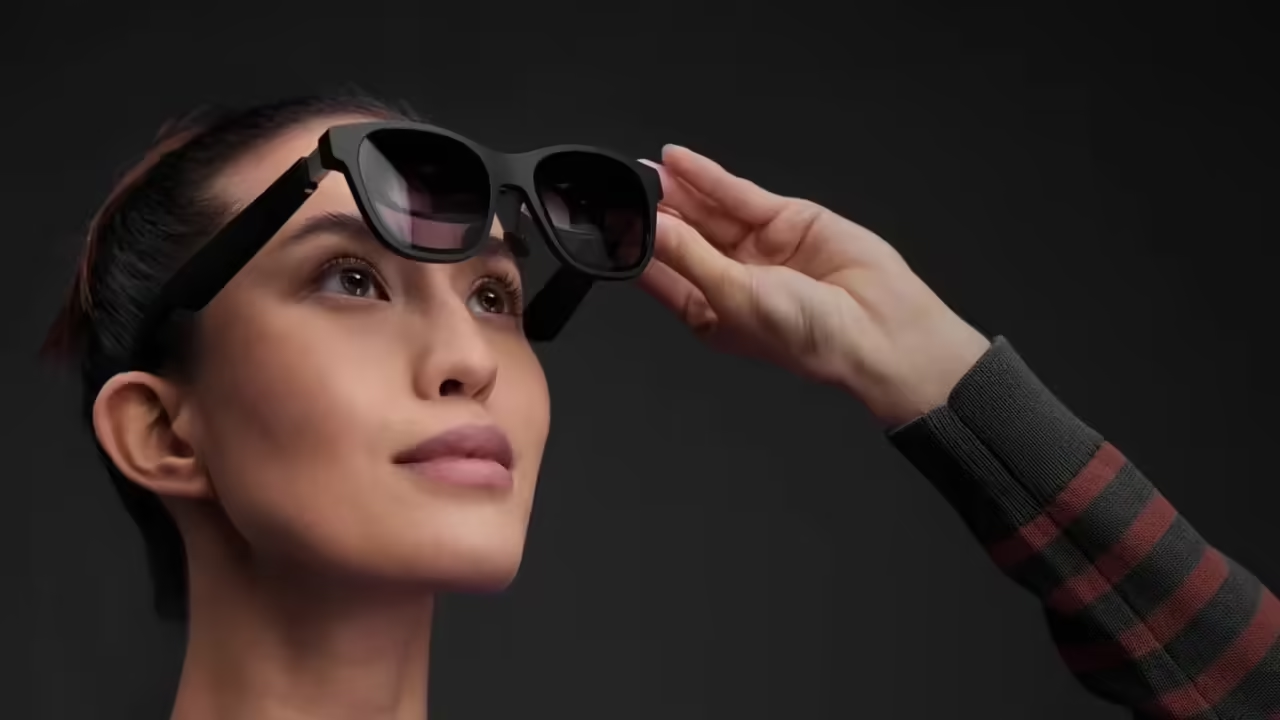What is cell phone radiation?
Cell phones, like other electronic devices, emit a type of radiation called non-ionizing radiation. This form of radiation is found at the lower end of the electromagnetic spectrum, alongside AM/FM radio and microwaves. Unlike ionizing radiation, such as X-rays or uranium, which can damage DNA and cause cancer, non-ionizing radiation does not have enough energy to do so.
Types of radiation emitted by mobile devices:
Radiofrequency (RF): This is the main form of radiation emitted by cell phones. It is used to transmit information between the phone and cell towers. The amount of RF emitted by a phone is measured in Specific Absorption Rate (SAR). All cell phones must comply with SAR limits established by international health organizations.
Electromagnetic fields (EMF): EMFs are generated by the electric current flowing through the circuits of the cell phone. Low-frequency EMF exposure, such as that emitted by cell phones, has not been associated with any adverse health effects.
Is there evidence that cell phone radiation harms health?
There has been extensive research on the potential health effects of cell phone radiation. While some studies have suggested a possible association between cell phone use and certain types of cancer, others have not found evidence of such an association. The World Health Organization (WHO) has classified radiofrequency radiation as possibly carcinogenic to humans (Group 2B), which means there is some evidence that it could cause cancer, but it is not conclusive.
What can I do to reduce my exposure to cell phone radiation?
While there is no definitive evidence that cell phone radiation causes harm to health, some people may choose to take precautions to reduce their exposure. Some measures you can take include:
- Limiting the time you spend talking on the phone: Use headphones or the speakerphone when possible.
- Sending text messages or emails instead of making calls: These forms of communication do not expose your head to radiation.
- Avoiding using the phone in areas with poor signal: In these areas, the phone increases its power to communicate with the cell tower, which increases the amount of radiation it emits.
- Not sleeping with the phone near your head: You can turn it off or put it in airplane mode overnight.
- Buying a phone with a low SAR value: The SAR value of a phone can be found on the manufacturer’s website or in the user manual.
It is important to note that these are just some measures you can take to reduce your exposure to cell phone radiation. The decision to take these measures is personal.
What is SAR (Specific Absorption Rate)?
SAR, or Specific Absorption Rate, is a measure that quantifies the amount of radiofrequency (RF) energy absorbed by the human body when exposed to an electromagnetic field, such as that emitted by a mobile phone. It is expressed in watts per kilogram (W/kg). SAR is used to ensure that electronic devices comply with radiation exposure limits established to protect users’ health.
How is cell phone radiation measured?
The radiation emitted by cell phones is measured using various methods and specialized equipment:
- Phantom Models: Physical models that mimic the human head and body, called “phantoms,” are filled with a liquid that simulates the electrical properties of human tissue. The mobile phone is placed near the model, and the amount of radiation absorbed at different points of the model is measured.
- Electromagnetic Field Meters: These devices directly measure the intensity of the electromagnetic field emitted by the mobile phone.
- Computer Simulations: Computational models are used to simulate how radiofrequency waves interact with the human body. This helps predict SAR levels without the need for extensive physical testing.
Safe limits established by international organizations
International organizations have established exposure limits for mobile phone radiation to ensure user safety. The main standards include:
- FCC (Federal Communications Commission) in the United States: Sets a SAR limit of 1.6 W/kg measured over 1 gram of tissue.
- ICNIRP (International Commission on Non-Ionizing Radiation Protection): This organization recommends a SAR limit of 2.0 W/kg measured over 10 grams of tissue. These limits are followed by many countries outside the United States, including the European Union.
- National Standards: Some countries may have their own limits and regulations based on FCC or ICNIRP recommendations, or they may have independent standards.
These limits are designed to be conservative and provide a wide margin of safety, taking into account different levels of sensitivity among individuals and potential long-term effects.
Cell Phones with Highest Radiation Emission
In a world where the use of mobile phones is ubiquitous, concern about exposure to radiofrequency (RF) radiation is becoming increasingly relevant. Below is a list of cell phones that emit the most radiation, a comparison of their SAR values, and factors contributing to their high radiation emission.
List of Cell Phones that Emit the Most Radiation
Some of the mobile phone models with the highest SAR values, according to recent data, are:
- Xiaomi Mi A1: This model has a SAR value of 1.75 W/kg, making it one of the devices with the highest radiation emission.
- OnePlus 5T: With a SAR of 1.68 W/kg, this phone is also at the top of the list of devices with high radiation.
- Xiaomi Mi Max 3: Emitting 1.58 W/kg, this model follows the previous ones in terms of radiation emitted.
- OnePlus 6T: Its SAR value is 1.55 W/kg, placing it among the phones with higher emissions.
- HTC U12 Life: With 1.48 W/kg, this device adds to the models with high specific absorption rate.
- Xiaomi Mi Mix 3: This model emits 1.45 W/kg, another example of phones with high radiation emission.
- Google Pixel 3 XL: The SAR of this phone is 1.39 W/kg, placing it in the same category of high emission.
- OnePlus 5: Also with 1.39 W/kg, this OnePlus model shares the same SAR value as the Google Pixel 3 XL.
- Xiaomi Mi 9: This Xiaomi device has a SAR of 1.39 W/kg, similar to the two previous models.
- ZTE Axon 7 Mini: With a SAR value of 1.29 W/kg, this model completes the list of phones with higher radiation.
Factors Contributing to High Radiation Emission
The radiation emission from mobile phones can vary due to several factors:
- Antenna Design: The location and design of the antenna are crucial. Phones with poorly positioned internal antennas may emit more radiation to maintain good signal.
- Transmission Power: Devices that require higher transmission power to stay connected in weak signal areas tend to emit more radiation.
- Use of Higher Frequencies: Some models use higher frequency bands, which can result in higher radiation emission.
- Technology and Construction Materials: The quality of materials and technology used in the phone’s construction also influences radiation emission. For example, metal casings can interfere with the signal, increasing radiation emission.
- Software Optimization: The efficiency of software in managing signal and transmission power can affect SAR levels. Models with less optimized software often have higher emissions.
Cell Phones with Lowest Radiation Emission
In today’s digital age, where mobile phones have become indispensable, concern about exposure to radiofrequency (RF) radiation remains a relevant issue. Below is a list of cell phones that emit the least radiation, a comparison of their SAR values, and the technologies and designs that help reduce radiation.
List of Cell Phones that Emit the Least Radiation
Among the mobile phone models with the lowest SAR values, we find:
- Samsung Galaxy Note 8: This model has a SAR value of 0.17 W/kg, making it one of the devices with the lowest radiation emission.
- ZTE Axon Elite: With a SAR of 0.17 W/kg, it shares the same low radiation level as the Galaxy Note 8.
- LG G7: Emitting only 0.24 W/kg, this LG model is among the phones with lower radiation.
- Samsung Galaxy A8: Its SAR value is 0.24 W/kg, also placing it among the devices with low emissions.
- Samsung Galaxy S8+: With a SAR value of 0.26 W/kg, this model is another example of phones with low specific absorption rate.
- Samsung Galaxy S7 edge: This model emits 0.26 W/kg, being part of the Samsung family known for its low emission.
- Google Pixel XL: The SAR of this phone is 0.28 W/kg, placing it in the category of low emission.
- Samsung Galaxy S9+: Also with 0.29 W/kg, this Samsung model shares the same SAR value as the Pixel XL.
- Samsung Galaxy J6: This Samsung device has a SAR of 0.31 W/kg, continuing the trend of low emission in the Galaxy line.
- Samsung Galaxy A5: With a SAR value of 0.32 W/kg, this model completes the list of phones with lower radiation.
Technologies and Designs that Help Reduce Radiation
Reducing radiation emitted by mobile phones is an ongoing effort that involves various innovative technologies and designs:
- Antenna Design Optimization: The location and design of the antenna are crucial. Well-designed and positioned antennas can reduce the need for high transmission power, thus decreasing radiation emission.
- Better Power Transmission Management: Phones that can maintain good connectivity without needing high transmission power tend to emit less radiation. This is achieved through advanced software algorithms that optimize power usage.
- Use of Low-Conductivity Materials: The use of materials that do not interfere with radiofrequency signals can help reduce radiation emission. For example, plastic cases instead of metal.
- Advanced Network Technologies: Adopting more efficient network technologies, such as 4G and 5G, can reduce radiation emission as they enable faster and more efficient data transmission, requiring less power to maintain connection.
- Software Optimization: The software that manages connectivity and data usage on the phone plays a crucial role. Algorithms that optimize power usage and data transmission can help maintain low SAR levels.
Tips to Reduce Exposure to Cell Phone Radiation
Concern about exposure to radiofrequency (RF) radiation from cell phones is understandable, and adopting appropriate practices and technologies can help minimize this exposure. Below are some useful tips:
Recommended Practices to Minimize Exposure
- Use Speakerphone or Headphones: Instead of holding the phone next to your head, use the built-in speaker or headphones to keep the device away from your body.
- Send Text Messages: Preferably, use text messages instead of making prolonged calls, as the phone is further away from your body during this type of communication.
- Keep the Phone Away from the Body: Avoid carrying the phone in your pocket close to your body. Opt to carry it in a bag or backpack when possible.
- Limit Calls in Weak Signal Areas: In places where the signal is weak, the phone may increase transmission power, increasing radiation exposure. Limit calls in these areas.
- Use Airplane Mode in Specific Situations: When you do not need to be available for calls or data, activate airplane mode to disable all radio transmission functions of the phone.
Use of Accessories and Technologies to Reduce Radiation
- Wired or Bluetooth Headsets: Use wired or Bluetooth headsets for calls and listening to music, keeping the phone away from your body.
- Anti-Radiation Cases: Some cases and covers are designed to block or reduce the amount of radiation emitted by the phone when it is near your body.
- Hands-Free Devices: Use hands-free devices, such as car mounts or Bluetooth speakers, to make calls while driving, keeping the phone away from your head.
Phone Settings that Can Help Reduce Emission
- Disable Mobile Data and WiFi When Not in Use: When you do not need connectivity, disable mobile data and WiFi to reduce the phone’s radiation emission.
- Limit Device Use at Night: Some people choose to put their phones in airplane mode at night to reduce radiation exposure while sleeping.
- Regularly Update Software: Software updates may include improvements in power management and connectivity, which could reduce the need for high transmission power.
- Use WiFi Calling or VoIP: Some carriers offer the option to make calls over WiFi or VoIP apps, which may have lower radiation emission compared to traditional calls.








